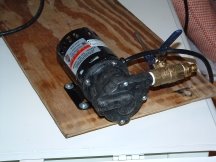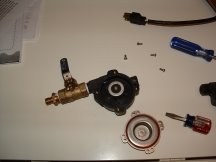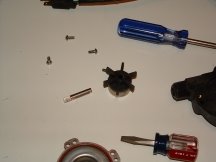I’m brewing this weekend, on Sunday, and will be doing the initial run with a new sparge-arm. This one is much more elegant than the drilled copper hoop I had been using; I was inspired by a sparger I saw in the most recent Zymurgy. It’s made of PVC, with a bolt and some washers providing the ‘spray’ aspect. I’ve extended it a bit so that the hose from the pump won’t get any kinks, and I think it’ll work like a champ. We’ll see on Sunday, I suppose. (Photos to follow; I’ll try to take some during the brew day.)
I’m also deep in the planning stages for conversion of my rig to a HERMS-style system. I’ve got the process flow mapped, and know what I need (in broad strokes) to make it work. I’m looking into various possibilities for automating the recirculating/heat-exchanging. I’m leaning towards something either based on the Arduino platform, or something that looks innovative (and, more important, simple) called “PICAXE”. At this point, only time will tell. I am not, unfortunately, an electrical engineer, nor have I been a computer programmer for decades, so there’s absolutely no telling how half-assed this will turn out. All the same, I’m optimistic.


 To install the new pump head, first you have to take off the old one. This is accomplished by removing four screws, located on the ‘face’ of the head. (Sorry for the blurry picture; the arrows indicate the individual screws’ locations.)
To install the new pump head, first you have to take off the old one. This is accomplished by removing four screws, located on the ‘face’ of the head. (Sorry for the blurry picture; the arrows indicate the individual screws’ locations.) Having pulled the head off, you’re faced with another quartet of screws on the inner workings of the head:
Having pulled the head off, you’re faced with another quartet of screws on the inner workings of the head: With these removed, you can pull things apart. You’re now faced with the impeller assembly:
With these removed, you can pull things apart. You’re now faced with the impeller assembly: A bit of tugging, and the whole thing will come apart nicely, including the impeller (the spinny bit) and its axle:
A bit of tugging, and the whole thing will come apart nicely, including the impeller (the spinny bit) and its axle:

